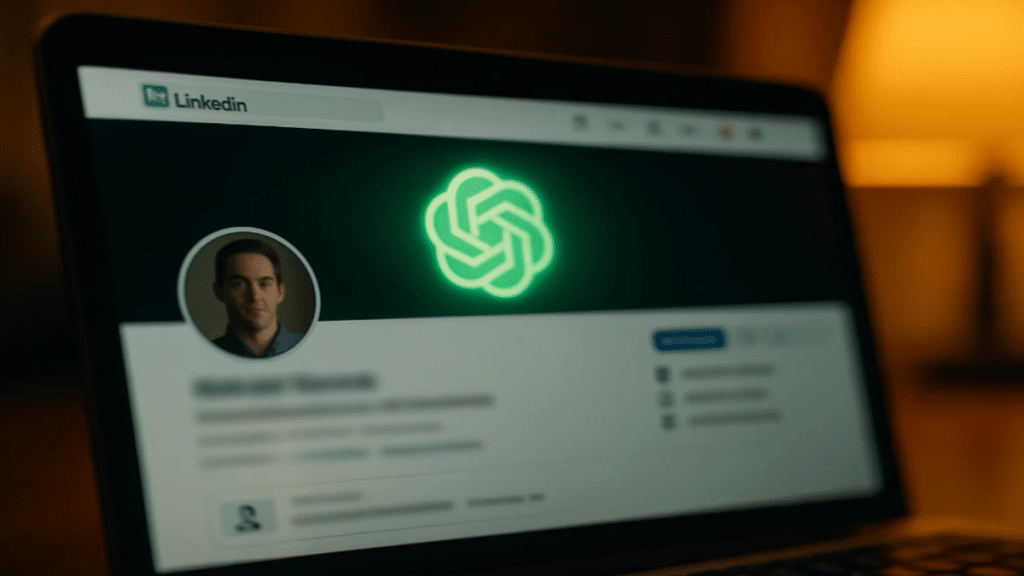I’ve spent years tweaking my LinkedIn profile — changing headlines, rewriting summaries, swapping headshots. Each time I thought, This is it, this will get me noticed. It never did.
Then one morning, after reading about how GPT software was being used for personal branding, I decided to throw my ego aside and let a machine take over my professional identity. I didn’t know it yet, but I was about to have the busiest week of my career.
How I handed my professional story to an algorithm
I started with a simple directive:
“Rewrite my LinkedIn profile to make me irresistible to recruiters in tech marketing. Highlight results, make it human, keep it credible.”
I expected a few cliché lines and some generic buzzwords. Instead, the Cloud Language Module read my existing profile like a forensic analyst, dissecting every section:
- Headline: Too vague. “Marketing Strategist” could be anyone.
- About section: Too long. No one wants to read a memoir.
- Experience: Buried results under responsibilities. Rookie mistake.
It didn’t just rewrite. It reorganized, reframed, and made me sound like I’d been running the growth department at a Fortune 500 company. But here’s the surprising part — every claim was pulled directly from my own projects and metrics.
The before-and-after difference
Here’s a snippet comparison:
Before:
“Responsible for managing paid social campaigns and reporting results to management.”
After:
“Scaled paid social revenue from $24K to $92K/month in six months, while reducing acquisition costs by 37%.”
That’s not fluff. That’s proof.
I realized I’d been underselling myself for years, hiding behind safe corporate language instead of leading with achievements.
Chatronix made it even better
A friend told me to drop the draft into Chatronix. I was curious — what could be better than this polished version?
Turns out, quite a bit:
- Six-model merge: Chatronix ran my profile through ChatGPT, Claude, Gemini, Grok, and two more models.
- Turbo Mode with One Perfect Answer: Instead of six separate rewrites, I got a single, blended profile pulling the strongest lines from each.
- Recruiter-targeted phrasing: It adjusted key terms to match language that triggers LinkedIn search algorithms.
- Industry relevance: It highlighted projects most likely to resonate with my target roles, moving them to the top of my Experience section.
By the time I uploaded the Chatronix version, my profile looked like it belonged to someone whose calendar was booked solid for interviews.
What happened next
Within 48 hours:
- 19 new connection requests from senior recruiters.
- Three cold messages from companies I’d been following but never engaged with.
- A conversation with a VP of Marketing that turned into a freelance contract worth $8,500.
It wasn’t just about the words. It was about positioning — something I’d clearly never nailed on my own.
The prompts that worked best
Here are the exact prompts that got me the transformation:
- “Rewrite my LinkedIn headline to make me a top search result for [your target role].”
- “Summarize my career in 3 powerful bullet points, each under 20 words, focused on measurable results.”
- “Reorder my Experience section so the most impressive results appear first, even if they’re from older roles.”
Table – My LinkedIn rewrite workflow
| Step | Action | Tool |
| 1 | Export current profile text | |
| 2 | Run “Rewrite for recruiter appeal” prompt | ChatGPT |
| 3 | Apply data-driven phrasing | Claude |
| 4 | Merge with other model outputs | Chatronix |
| 5 | Use One Perfect Answer for final draft | Chatronix Turbo |
| 6 | Upload and monitor engagement |
Why the AI approach works
The truth is, most of us write LinkedIn profiles the way we write resumes — with safe, responsibility-heavy language that doesn’t stand out. AI doesn’t have your fear of sounding “too proud.” It sees patterns in profiles that get clicks and messages, then applies them to yours.
And with Chatronix’s multi-model setup, it’s like having six professional copywriters argue over the best way to sell you — until they produce one perfect version.
Bonus prompt – the recruiter magnet
“Rewrite my LinkedIn summary to immediately grab attention, show measurable results, and make recruiters feel they’ve found a perfect match — without sounding generic.”
The result? My LinkedIn isn’t just a digital resume anymore. It’s a lead magnet. It works 24/7, pulling in opportunities I used to chase.
Now, every time someone asks me how to stand out on LinkedIn, I don’t tell them to “network more” or “engage with content.” I tell them to let AI strip their story down to the parts that actually matter — and then build it back up to be undeniable.
